Petra, Jordan
Indiana Jones Approved!
One of the highlights of my travels over the past decade is the ancient city of Petra, Jordan. For a small country roughly the size of Portugal or Austria, Jordan really surprised me with gregarious citizens and several superb tourist offerings that made it feel much larger than it really is. Before I get into that - a short history lesson is in order.
I must admit my historical knowledge of Jordan was so rusty that I was shocked and delighted to find a well-preserved Roman Theatre in the centre of Amman along with the nearby iconic Temple of Hercules. In fact, the Roman Empire conquered Jordan and the neighbouring countries of Syria and Judea (present day Israel/Palestine) back in 63 BC and there are Roman ruins all over the place. The one useful thing I learned in high school history about this area is that the Jordan Valley is the cradle of civilization. As mentioned in a previous post, Damascus, Syria is generally considered the oldest continuously inhabited large city in the world, founded in 3000 BC (with habitation starting around 8000 BC), with nearby Amman and Beirut not far behind. Jericho, in current Palestine, is older than Damascus (around 9000 BC) but it never reached the status of city. Amman is the largest city in the Levant region, with a little over 4 million inhabitants in its metropolitan area.
The Roman Theatre and Temple of Hercules aren’t far apart so I spent a lovely September morning traipsing around these two exquisite historical sites. At this time of year it is still blazing hot in the afternoon, up to 35 degrees, but the much cooler evenings (around 20 degrees) are delightful for dinner and a stroll! Petra, located further south and surrounded by desert, approaches 40 degrees in daytime but also has very pleasant evenings.
Located about 240 km. south of Amman, it takes three and a half hours by bus to reach Petra, which cost me $15 one way. On the way back I hired a taxi which was surprisingly affordable at around $50 USD and the driver was a hoot like many of the bubbly Jordanians I ran into, a pleasant surprise. He told me I should also visit two locations within an hour’s drive of Amman - the Dead Sea (lowest point on earth at 430 meters below sea level) just south of the capital, and to the north - Jerash, known as the Pompei of the Middle East - one of the world’s best preserved Greco-Roman towns. Unfortunately I didn’t have enough days booked on this particular trip for Jerash - more on the Dead Sea in another post.
My AirBnb in Petra was a fantastic place located in the steep hills surrounding the central city, run by a very amiable Belgian. She had come to Petra on a holiday several years before, and fell in love with the place. I stayed for three nights and it had a similar effect on me. I could have easily stayed a month. Like the temples of Siem Reap, Essaouira or Bagan (next post), Petra is one of those mystical places in the world with an uplifting spiritual vibe, beautiful scenery and welcoming people, a place I shall surely return to someday.
As for ticketing - I purchased a Jordan Expert Pass online before I entered the country which at first glance isn’t cheap at $112 USD but is highly recommended because - if you stay at least three nights in Jordan - your visa fee on arrival, a hefty $56 USD, or half the value of the pass, is waived. It also includes 3 days and nights of admission to Petra plus 40 other attractions throughout the country so it is actually an excellent value! It comes as a QR code on your phone that will be scanned at any attraction entrance allowing you to skip all the ticket lines saving a bunch of time and hassle.
Be prepared to walk your butt off at Petra because it’s a huge site, taking roughly 30 minutes just to walk from the entrance gate to the Treasury - but you won’t mind because the scenery is epic Indiana Jones! Unlike in the movie, you can’t go inside the Treasury anymore for conservation purposes - but it’s empty anyways, long ago stripped of any treasures (probably by Belloq!). However, just a few weeks ago it was revealed that a whole new chamber has recently been discovered under the Treasury with the largest collection of human remains found to date at 12, plus grave goods and an item resembling the Holy Grail from the movie (it isn’t). From there it is another 30 minute walk to the iconic Monastery and along the way you will pass one amazing structure after another, built not just by the original Nabataens, but those who followed including the Romans and the Byzantines in a valley surrounded by gorgeous reddish pink mountains, a stunningly beautiful backdrop, day or night. Remember that you have to walk all the way back as well - although there is a back entrance/exit you can use near the Monastery with a little additional planning plus some money for a driver which can save you a good 30 minutes or more.
The first day you absolutely must walk through the spectacular slot canyon which begins about ten minutes past the ticket entrance. The 20 minute walk through the canyon to the Treasury is worth the admission price on its own - it is incredibly scenic and it will also explain why Petra was hidden for centuries and was then able to resist repeated Greek attacks. Time for another history lesson…
Petra was named one of the New 7 Wonders of the World in the early 2000’s, after which tourism spiked. It was founded around 400 BC by the Nabataeans, an Arab Bedouin tribe who became very wealthy by holding a trading monopoly at this Silk Road crossroads between Europe, Asia and Africa for centuries. It was attacked repeatedly by the Greeks who were envious of the Nabataens’ wealth, starting in 312 BC (Petra means “rock” in Greek, an accurate description!) but they couldn’t defeat the camel mounted Nabataean warriors who slayed 4,500 Greek soldiers in that first battle alone. They subsequently maintained control until the Romans finally took it over in 162 AD. The Romans were smarter than the Greeks because they allowed the Nabataen king to remain in power and in exchange the Nabateans gratefully (well maybe not) paid taxes to Rome in a vassal state partnership. After an earthquake caused much damage around 450 AD, it was ruled by the Byzantines until around 800 AD when the city was largely abandoned. It remained unknown to all but the locals for the next 1000 years, until a Swiss explorer in 1812 rediscovered it followed by extensive excavation and survey work in the early 20th century by the British. Shepherds were still living in its structures up until 1985 when it was made a UNESCO World Heritage Site and they were forcibly evicted by the Jordanian government.


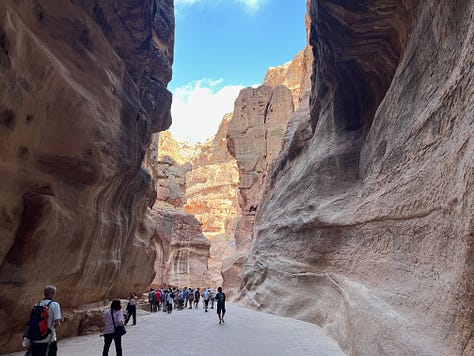

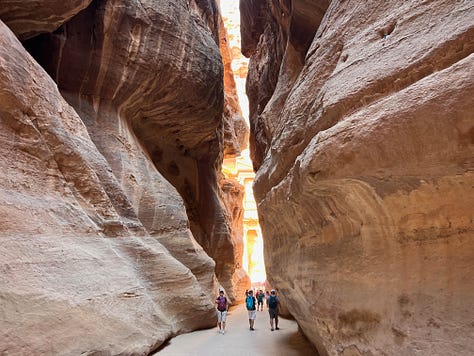

Once through the slot canyon and past the Treasury, there is a small village where you can get drinks (you will need them) food and souvenirs, ride a camel and view many ancient structures. Indiana Jones has retired and does a passable job running the snack shop, apparently after major plastic surgery.
On my second day I decided to try one of the stunning hikes into the heights of the surrounding mountains, from which the views are out of this world. But be careful - it is easy to get lost - as I did at one point, and it’s a desolate area with lots of dangerous cliffs and iffy trail sections which can suddenly sneak up on you. Better not to hike solo. I took the appropriately named “High Place of Sacrifice” trail. Do as I say, not as I do.

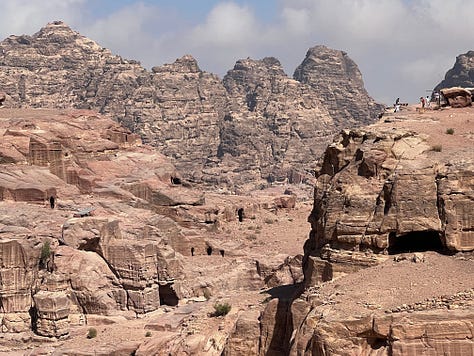





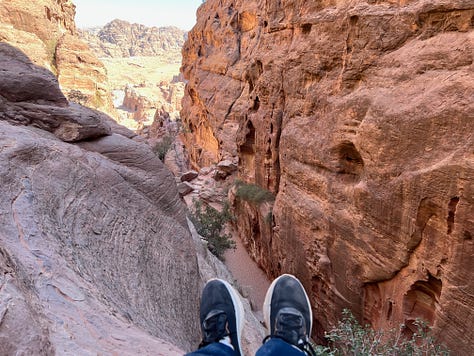

After getting lost and running around on the tops of mountain ridges that all looked the same for a couple of hours under the baking sun, I was grateful to be guided back to the main trail by a local, but not before taking these awesome shots. Truly a spectacular place and well worth several visits, let alone one. It’s amazing what our ancestors were up to!!






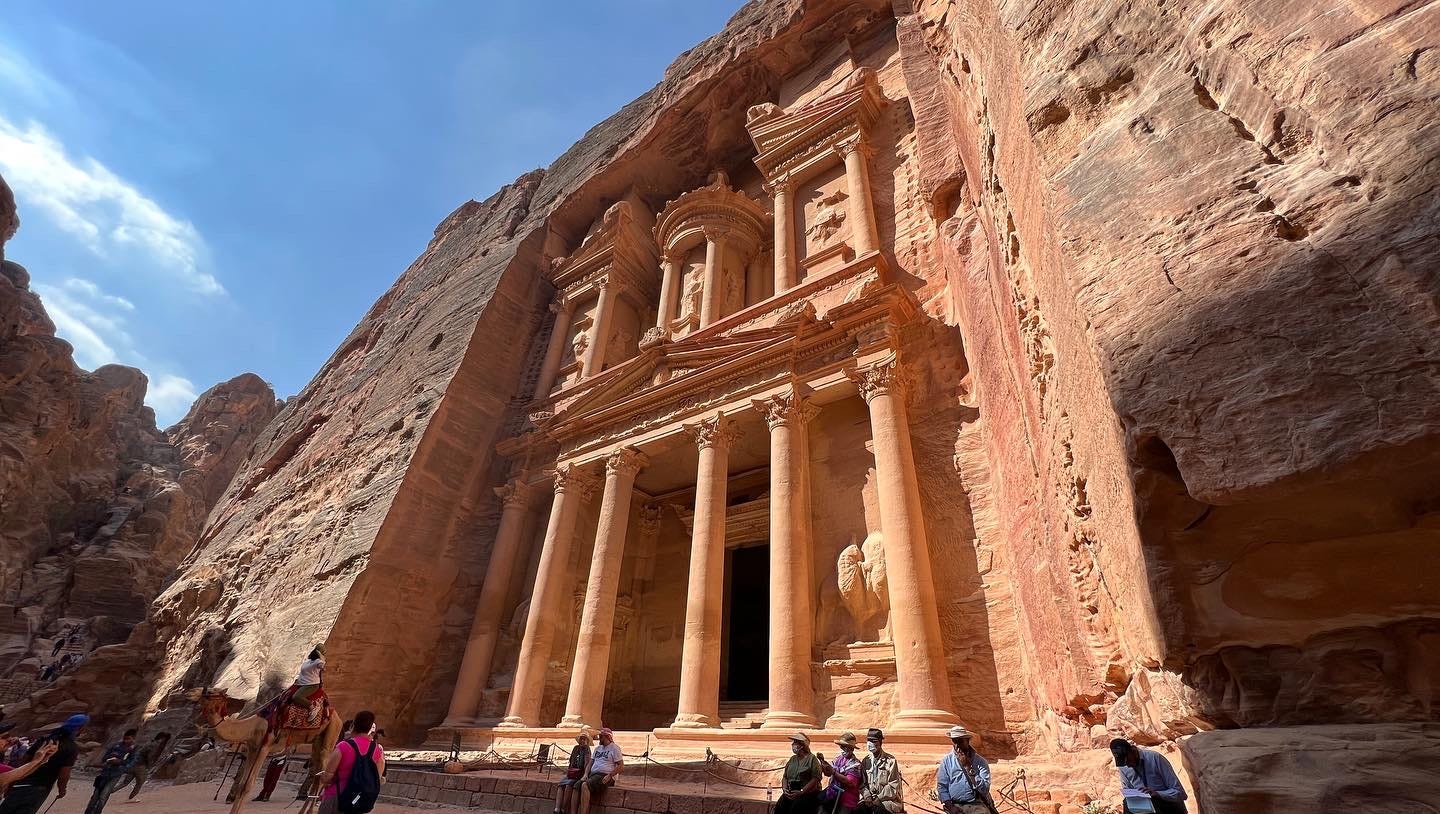
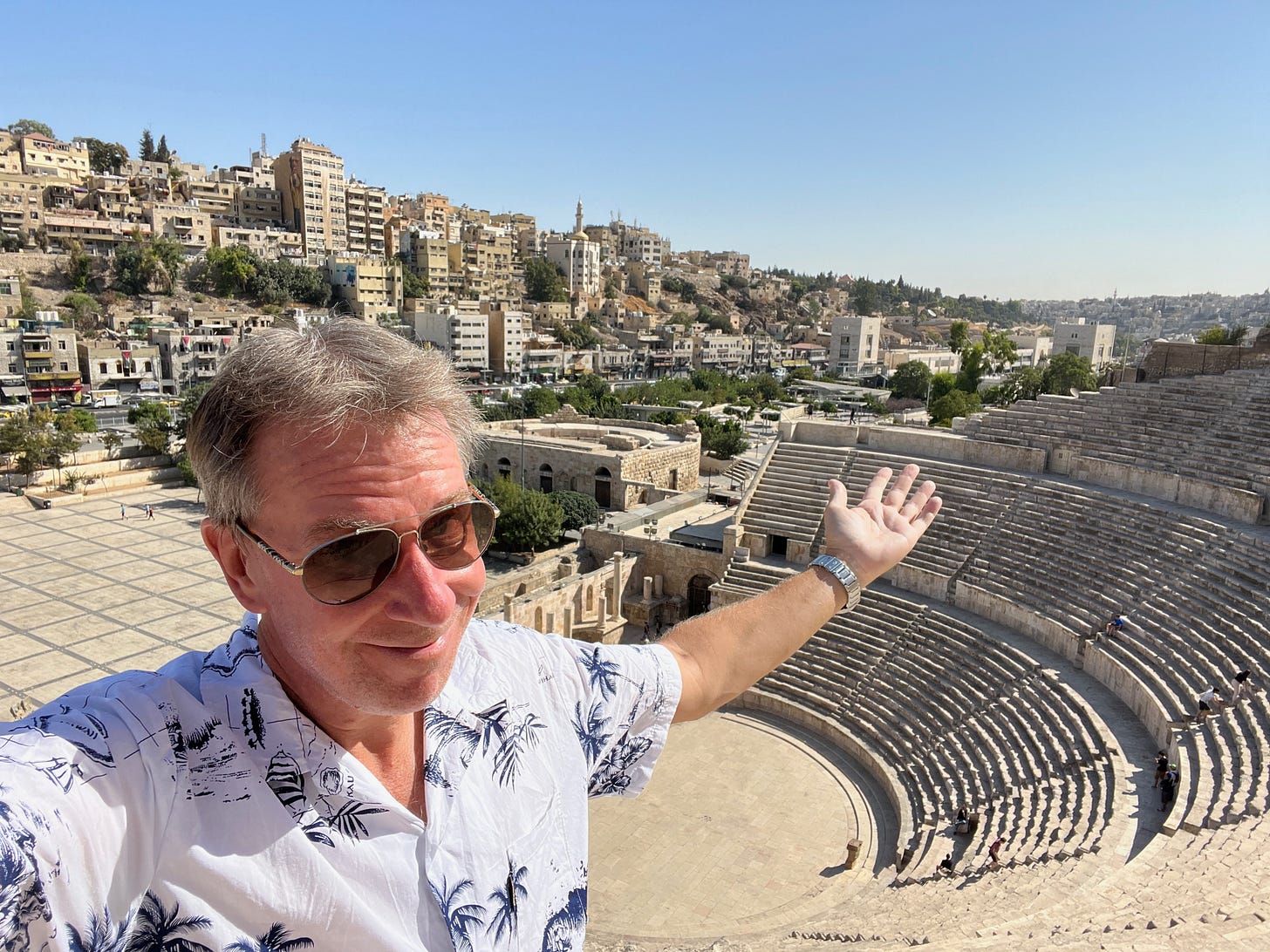
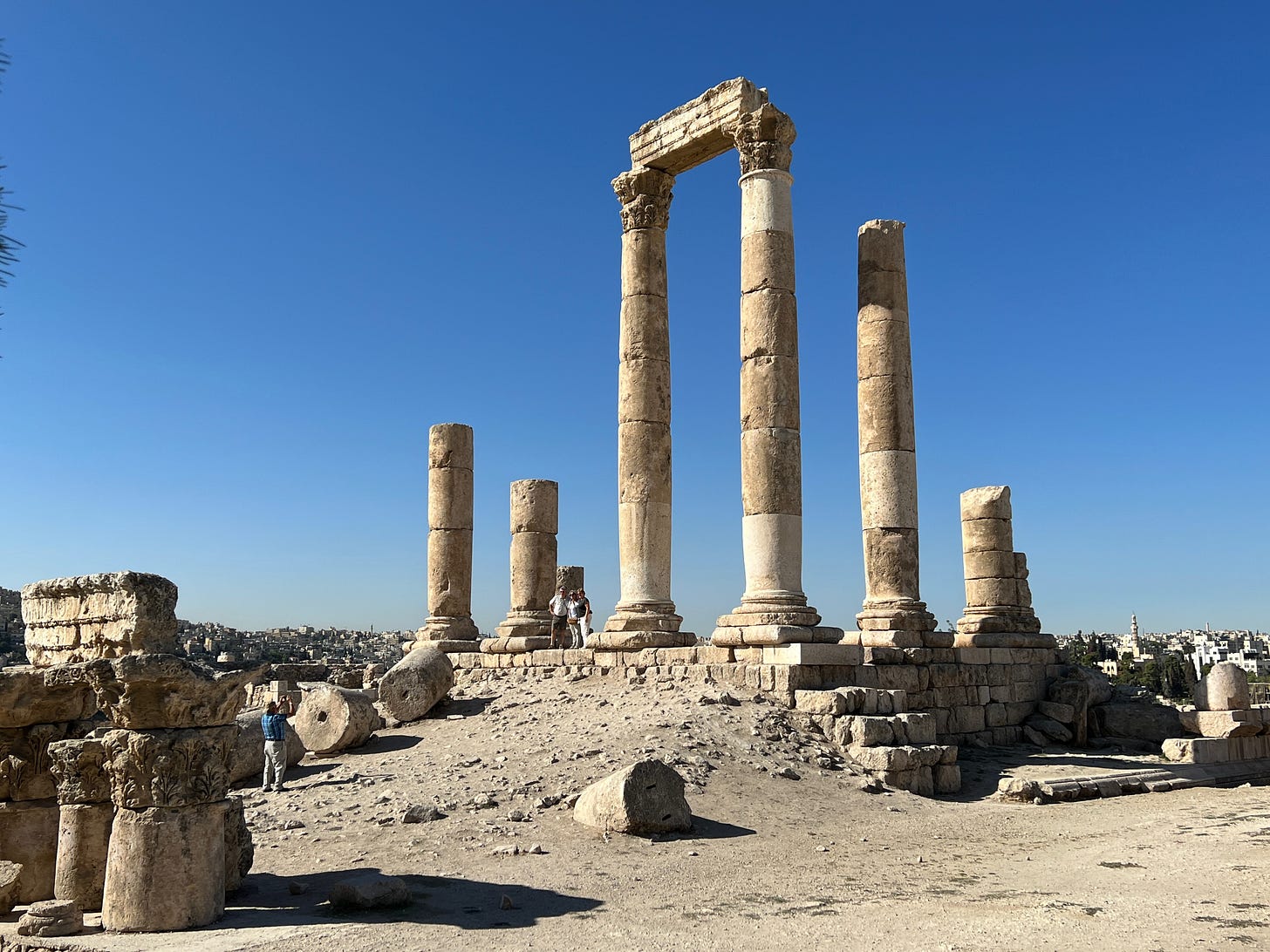

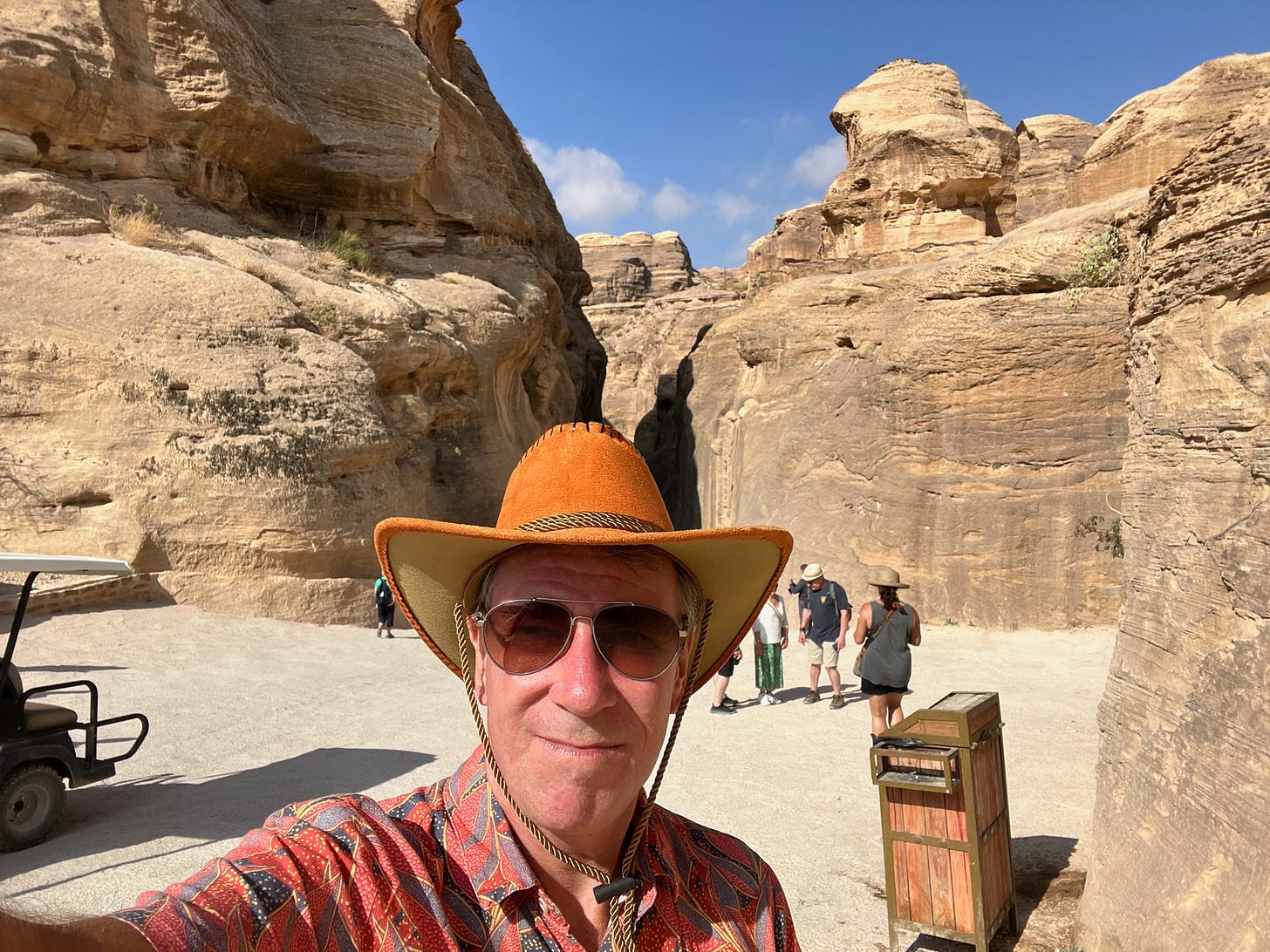

Petra looks spectacular. I've read many pieces about it - yours is one of the best.
I definitely want to go there.
I'm still figuring out how that area fits into the early history of homo sapiens.
Current theory is they came out of Africa about 80,000 years ago, avoided Europe which was frozen and occupied by fearsome Neanderthals, turned right and migrated across what is now the Middle East, through Asia and crossed from Bali to the Kimberley region of Australia and Papua New Guinea about 65,000 years ago.
So that would fit with the earliest homo sapien settlements being in Iraq, Syria, Jordan etc.
Not sure how other places such as Ninevah and Babylon fit into the timing of the earliest cities, which may have been Sumerian.
It's clear that Western Europe and the Americas are relatively recent in terms of homo sapien history, which might surprise some people.
Interesting stuff. Keep writing.
I've started planning a piece on the Age of Dinosaurs in Australia, so I'll have to think back 150 million years, which is a challenge!
Amazing....